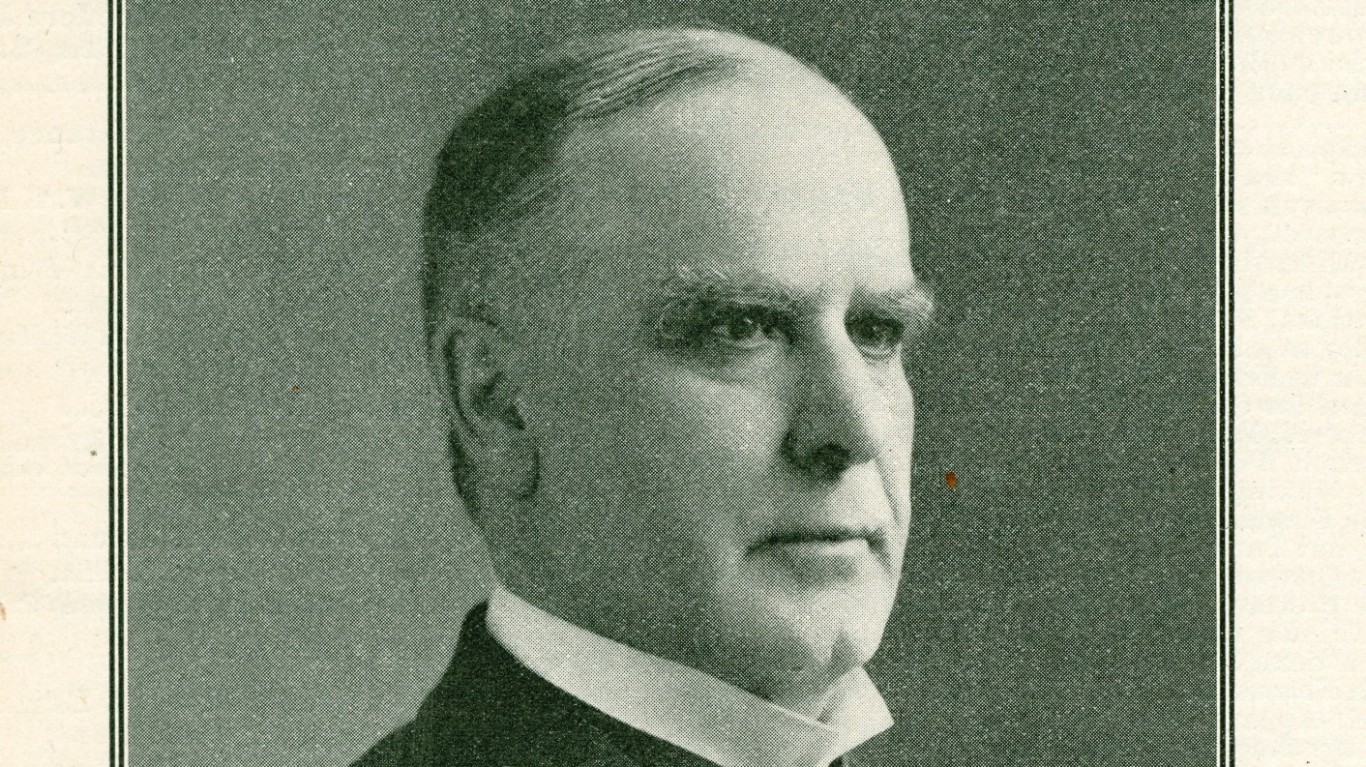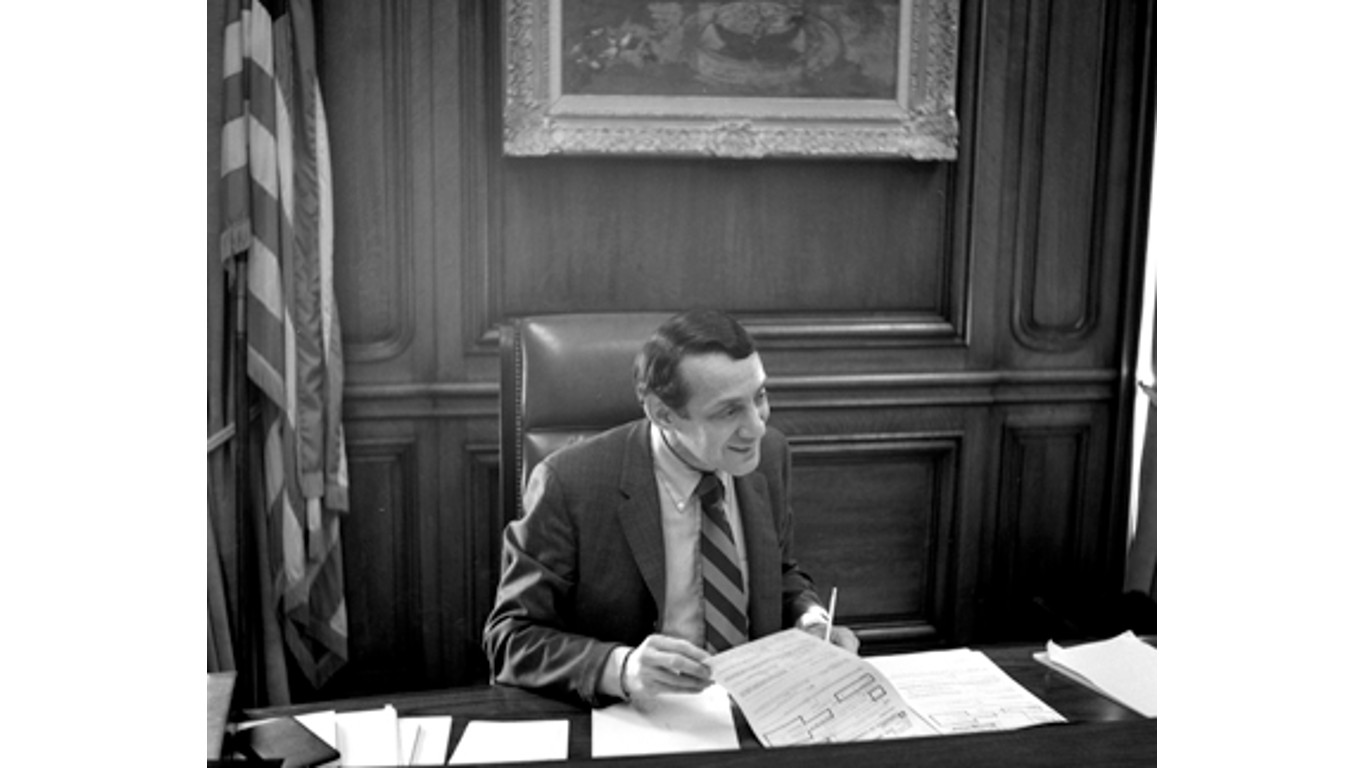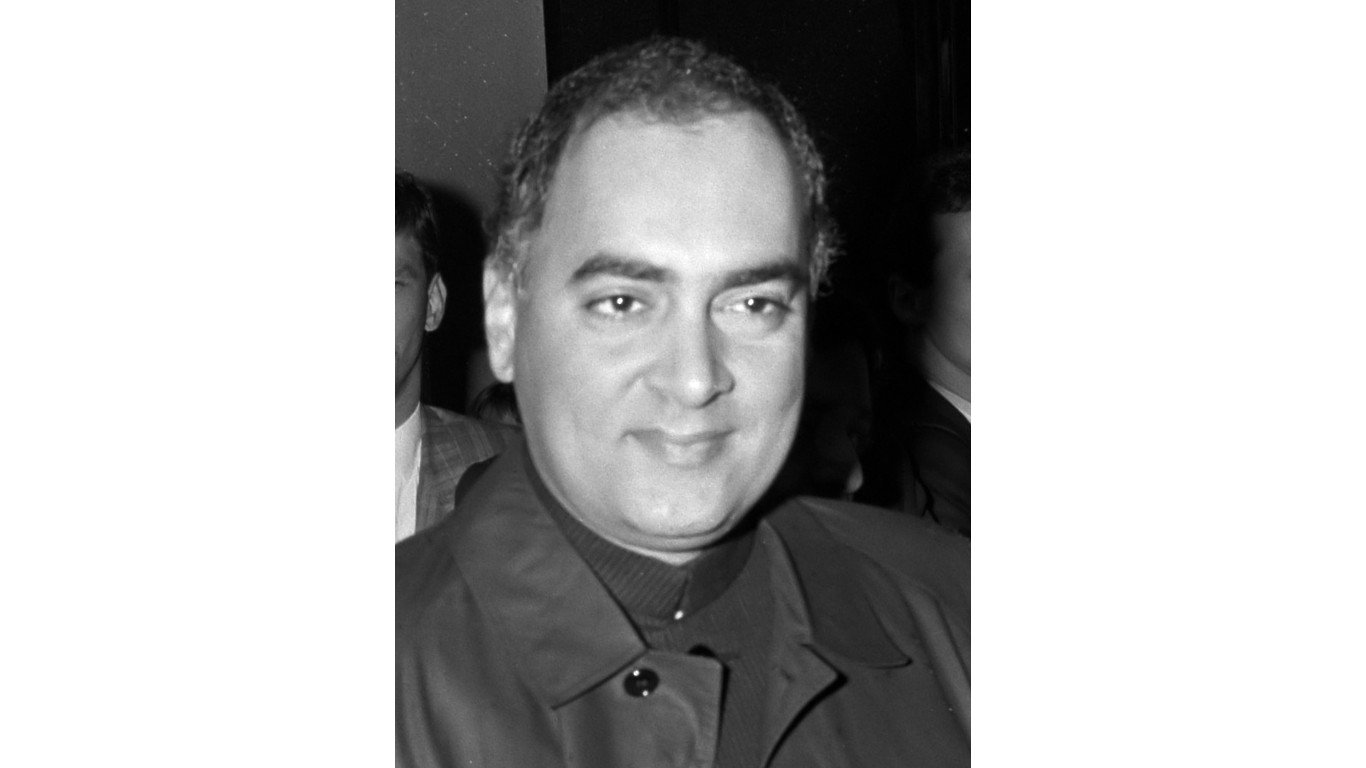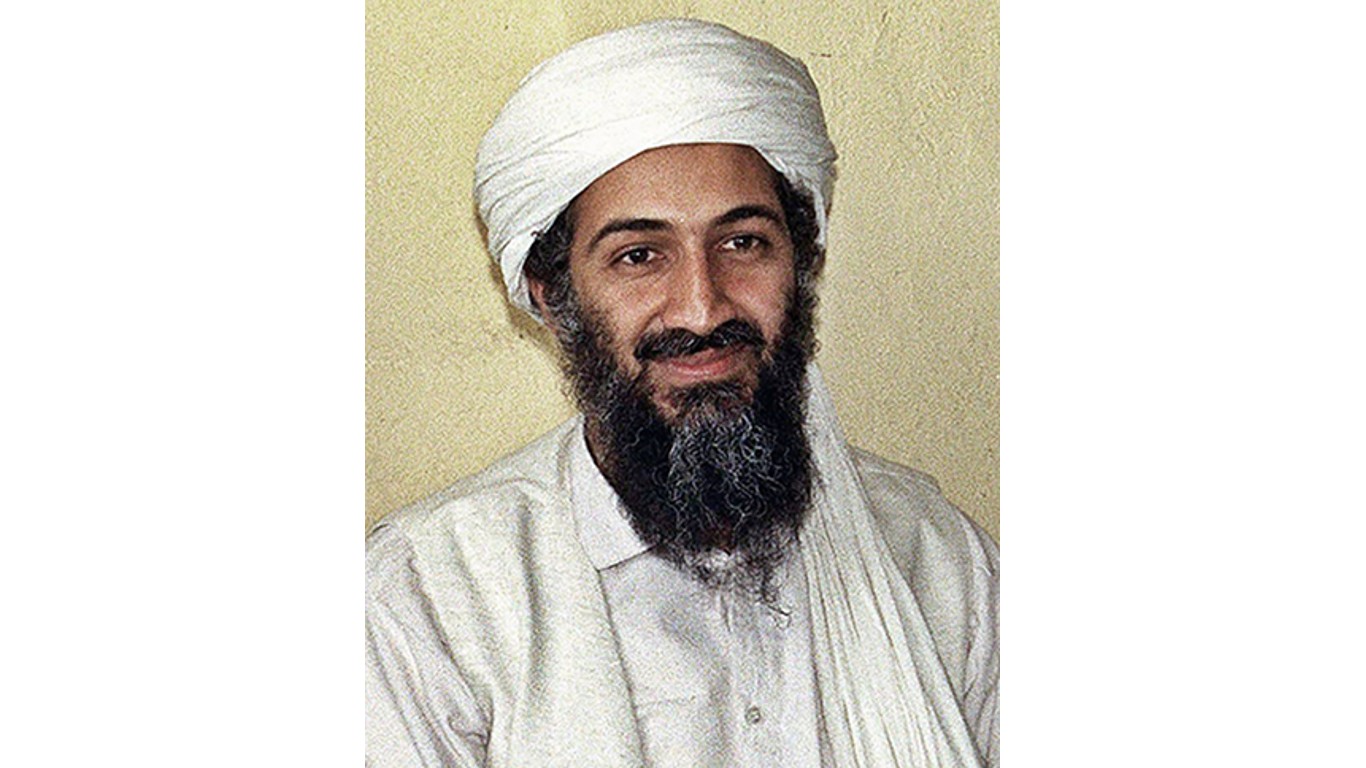
With very few exceptions, the act of assassination is political. Whether the executioner is acting alone or on behalf of a larger organization or country, the intended result is ending the target’s ideas, striking fear in their colleagues or allies, or even altering the very destiny of a nation. (These are 26 rulers who were killed by their own people.)
24/7 Tempo has created a list of the assassinations that changed the world by referring to such sites as Historyhit, Historyplex, History, Britannica, and Biography. We exercised editorial discretion in compiling the final list, based on the long-term effects each assassination had.
Sometimes the outcome is almost immediately disastrous, as with the assassination of Austro-Hungarian archduke Franz Ferdinand, which triggered World War I, and the murder of Rwandan president Juvénal Habyarimana, which ignited one of the 20th century’s worst genocides. (These are the nations that killed the most civilians during the 20th century.)
With tacit U.S. support, South Vietnam and South Korea assassinated presidents Ngô Đình Diệm and Park Chung-hee to end oppressive rule in their respective countries.
Click here to see 24 assassinations that changed the course of history
Political leaders Anwar Sadat and Yitzhak Rabin each won a Nobel Peace Prize, along with their Islamic counterparts, for trying to forge elusive peace accords in the Middle East, and each paid the ultimate price for pursuing that goal. Mahatma Gandhi and Dr. Martin Luther King Jr. used nonviolent strategies in the cause of civil rights in India and the United States, respectively – but both died violently.
While assassinations usually have unfortunate aftermaths, often involving political destabilization, good can sometimes come from them. For instance, as tragic as was the shooting death of Harvey Milk, the first openly gay office holder in San Francisco, his slaying led to greater understanding and acceptance of the LGBTQ community nationwide.
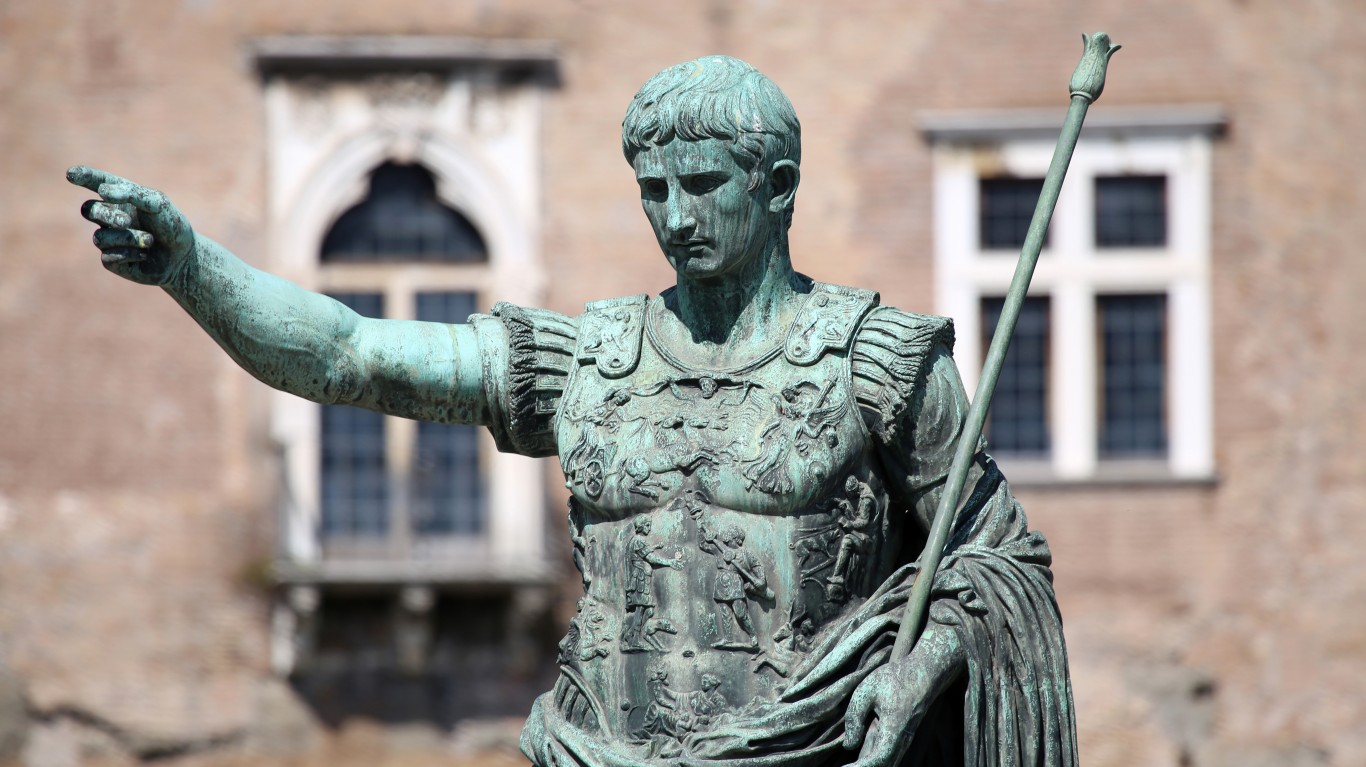
Julius Caesar
> Killed in: 44 B.C.
> Perpetrator(s): Roman senators
Julius Caesar won many victories for Rome when it was a republic. But he angered the Senate by crossing the shallow river called the Rubicon, the border between Rome and its conquered lands, violating custom and setting off a civil war. Following his victory, he was made dictator “in perpetuity.” Fearing Caesar’s aggrandizement of power, a conspiracy of senators, led by Marcus Brutus and Cassius Longinus, stabbed him to death. Unexpectedly, his death brought about the demise of the Roman Republic and Rome’s beginning as an empire.
[in-text-ad]

Abraham Lincoln
> Killed in: 1865
> Perpetrator(s): John Wilkes Booth
What would have happened had Lincoln lived is one of history’s greatest what-ifs. His successor, Andrew Johnson, was the only Democrat and Southerner in Lincoln’s administration during the Civil War. Where Lincoln was politically deft, had the ability to manage dissenting opinion, and sought to peacefully reintegrate the South into the Union, Johnson was stubborn, lacked allies, and could not keep the Radical Republicans from imposing a harsh peace on the former Confederacy. Some historians believe Lincoln would have run afoul with Radical Republicans also.
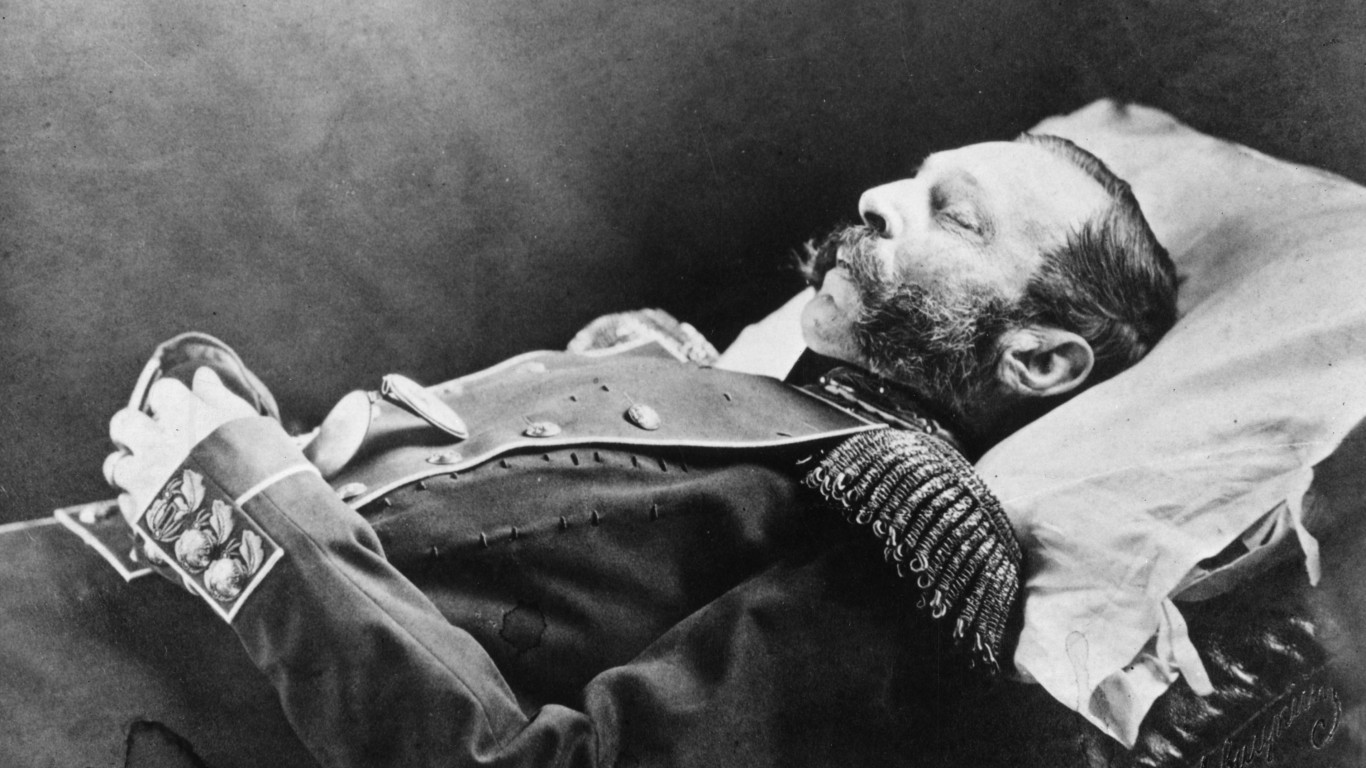
Tsar Alexander II
> Killed in: 1881
> Perpetrator(s): People’s Will
Ordinary Russians had great hope for Tsar Alexander II. In his earlier years as the ruler of the far-flung Russian empire, Alexander had embraced liberal principles. In 1861, he freed the serfs and abolished corporal punishment as well as advocating for land reform. But more regressive voices got his ear and Alexander became more suspicious of those outside his circle, especially after several assassination attempts on him. One attempt finally succeeded, when a radical group called the People’s Will killed the tsar with a bomb thrown at his feet. Fearful of revolution, the tsars that followed Alexander were more repressive.
William McKinley
> Killed in: 1901
> Perpetrator(s): Leon Czolgosz
Under President McKinley, the United States became a global power after routing Spain in the Spanish-American War. Shortly after winning a second term, McKinley was shot and killed by anarchist Leon Czolgosz. McKinley was succeeded by Teddy Roosevelt, the youngest man to serve as president. The energetic Roosevelt, a veteran of the Spanish-American War, embodied the vigorous American nation and sought to project its might around the world. Roosevelt was a different kind of Republican president, suspicious of corporate power and sympathetic to better working conditions for American laborers.
[in-text-ad-2]
Archduke Franz Ferdinand
> Killed in: 1914
> Perpetrator(s): Gavrilo Princip
Archduke Franz Ferdinand was heir to the throne of the polyglot Austro-Hungarian Empire. Ferdinand felt that the empire needed modernizing and the bureaucracy should be reformed, in contrast to his uncle, Emperor Franz Joseph. Ferdinand also believed much of the empire needed greater autonomy, including the recently annexed territory of Bosnia and Herzegovina, which contained a large Serb population. On June 28, 1914, Serb nationalist Gavrilo Princip assassinated the archduke in Sarajevo, igniting the powderkeg that became World War I.

Tsar Nicholas II
> Killed in: 1918
> Perpetrator(s): Bolsheviks
The assassination of the tsar and his family ended the 300-year reign of the Romanov dynasty. Tsar Nicholas II had been deposed in 1917 and his family was being held as hostages by the Bolsheviks. By killing all members of Russia’s ruling family, the Bolsheviks removed the possibility of a restoration of the monarchy and paved the way for the creation of the Soviet Union, the world’s first communist state. He was the fifth tsar to lose his life to an assassin.
[in-text-ad]

Mahatma Gandhi
> Killed in: 1948
> Perpetrator(s): Nathuram Vinayak Godse
In one of history’s great ironies, Mahatma Gandhi, whose strategy of nonviolent resistance led to the expulsion of the British from India in 1947, was himself assassinated by a Hindu fanatic a year after his nation gained independence. Gandhi’s death robbed India of its founding father in its first years as a nation free from colonial rule. Gandhi’s effective methods served as an inspiration for civil rights leaders such as Dr. Martin Luther King Jr.
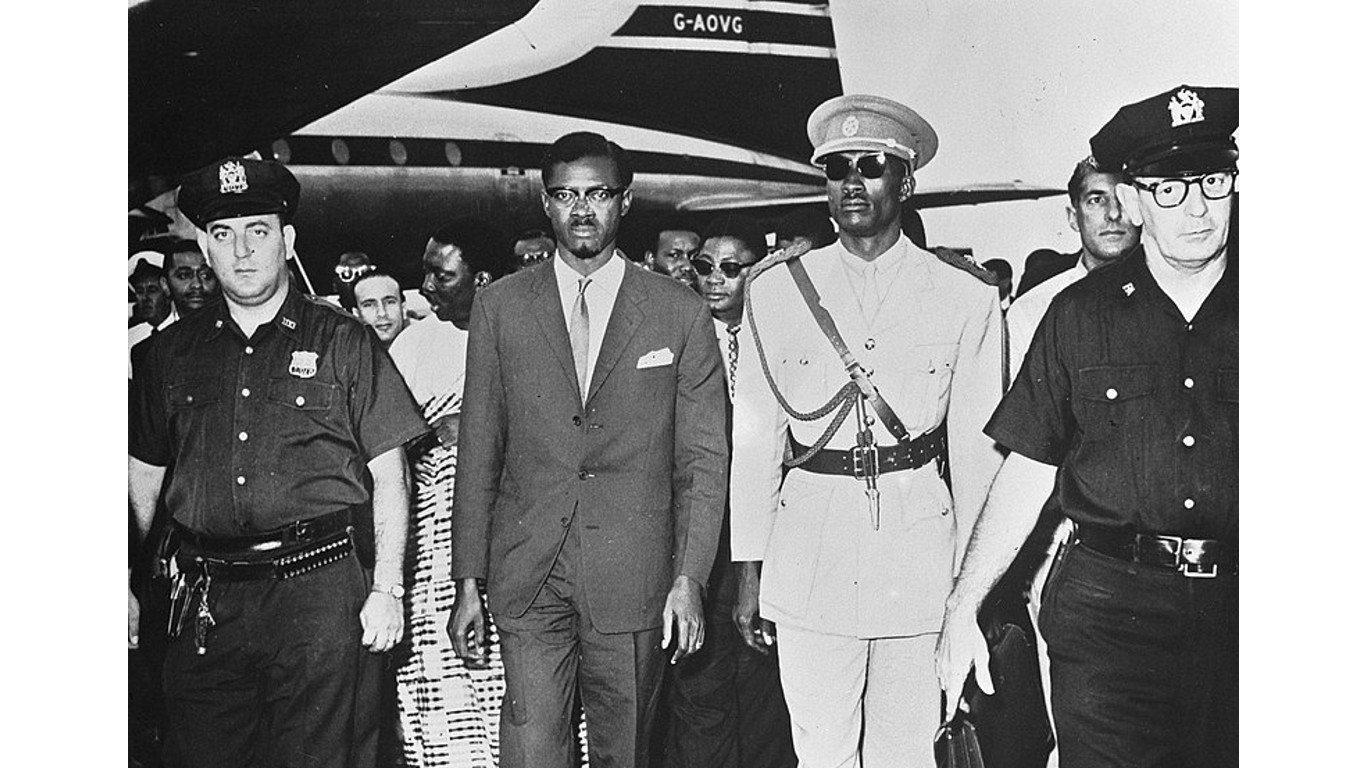
Patrice Lumumba
> Killed in: 1961
> Perpetrator(s): Opponents aided by the CIA
The 1960s ushered in an era of assassinations, or attempted assassinations, around the world, some of which were abetted by the United States. One involved Patrice Lumumba, the president of the Republic of Congo (now the Democratic Republic of the Congo). Lumumba was elected after the African nation became independent from Belgium. Lumumba was a Pan-African, anti-colonial leader who gravitated toward the Soviet Union. The West could not abide the African nation moving toward the communist bloc and he was targeted for an assassination that likely involved the CIA. Overthrown in a coup, he was imprisoned and tortured, then shot by a firing squad. Lumumba’s death poisoned relations between African nations and the West for years afterward.

Ngô Đình Diệm
> Killed in: 1963
> Perpetrator(s): CIA and Vietnamese assassins
President Ngô Đình Diệm was an autocratic ruler of South Vietnam who was nominally supported by the U.S. because he was an anti-communist, though his iron-fisted rule alienated elements of Vietnamese society and the military. The United States believed Diệm and his brother, Ngô Đình Nhu, were not doing enough to combat the communist insurgency. After South Vietnam’s military assured the U.S. of continued anti-communist efforts, America allowed a coup to proceed, which resulted in both brothers being stabbed and shot to death. Diệm’s demise destabilized the South Vietnamese government and encouraged the North Vietnamese to denounce American intervention. A year-and-a-half later, the first U.S. troops landed in South Vietnam, joining some 25,000 military advisors already in the country.
[in-text-ad-2]

John F. Kennedy
> Killed in: 1963
> Perpetrator(s): Lee Harvey Oswald
Slain by troubled U.S. Marine veteran Lee Harvey Oswald as his motorcade passed through Dealy Plaza in Dallas, John F. Kennedy was the fourth American president to be killed while in office. The national sorrow surrounding Kennedy’s death, as well as the extraordinary parliamentary skills of his successor, Lyndon B. Johnson, led to the passage of two landmark anti-segregation laws – the Civil Rights Act and the Voting Rights Act. Historians have speculated that if Kennedy had lived, the U.S. might not have committed thousands of troops to fight in Vietnam. We do know that Johnson accelerated the American troop buildup in Vietnam and that terrible consequences followed.
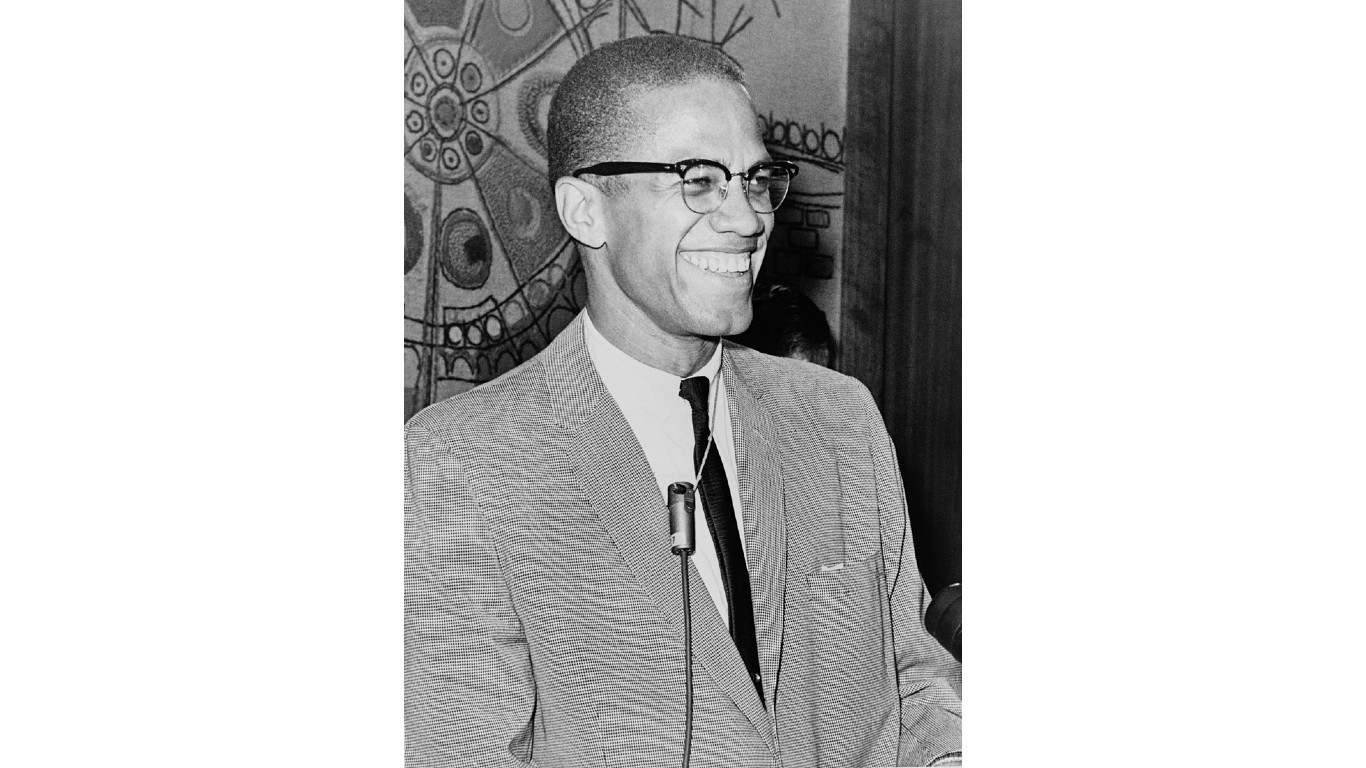
Malcolm X
> Killed in: 1965
> Perpetrator(s): Members of the Nation of Islam
A leader of the Nation of Islam – the Black Muslims – until the year before his death, when he renounced the group and formed the Organization of Afro-American Unity, Malcolm X channeled the anger many African-Americans felt in the early 1960s into a racial separatist movement that served as a counterpoint to the nonviolent approach to change advocated by Dr. Martin Luther King Jr. Considered an apostate by the Black Muslims, he received numerous death threats, and while addressing a meeting of the OAAU in a Manhattan ballroom, he was shot 21 times by Nation of Islam members (some say with the tacit approval of the NYPD or FBI). Three men were convicted of the crime, but two were exonerated and released from prison in 2021. Malcolm X’s mystique grew when his autobiography was published eight months, and he was a major influence on the Black Power movement.
[in-text-ad]
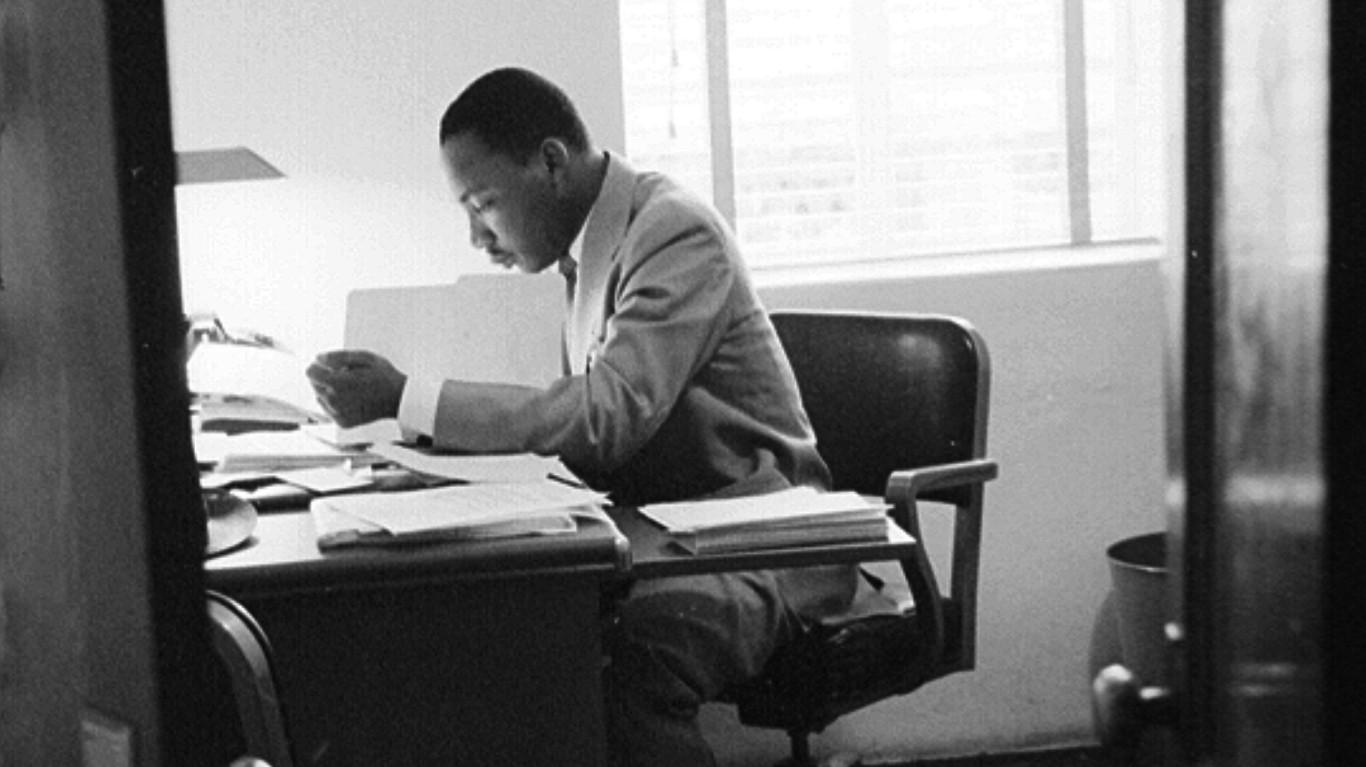
Dr. Martin Luther King Jr.
> Killed in: 1968
> Perpetrator(s): James Earl Ray
Dr. Martin Luther King Jr., the symbol of the civil rights movement, was slain in Memphis, where he’d gone to support a strike by the city’s Black sanitation workers. A racist career criminal named James Earl Ray shot him as he stood on the balcony of his motel. King’s death triggered outrage and riots all over the U.S. His successors carried on his work to make America a more fair and just nation, but the movement’s beacon of hope for racial unity was irreplaceable. Had King lived, he would have likely been a crusader for gun-control legislation to curb the gun violence ravaging the inner cities. King opposed the Vietnam War and probably would have voiced his opposition to the conflicts in Afghanistan and Iraq.
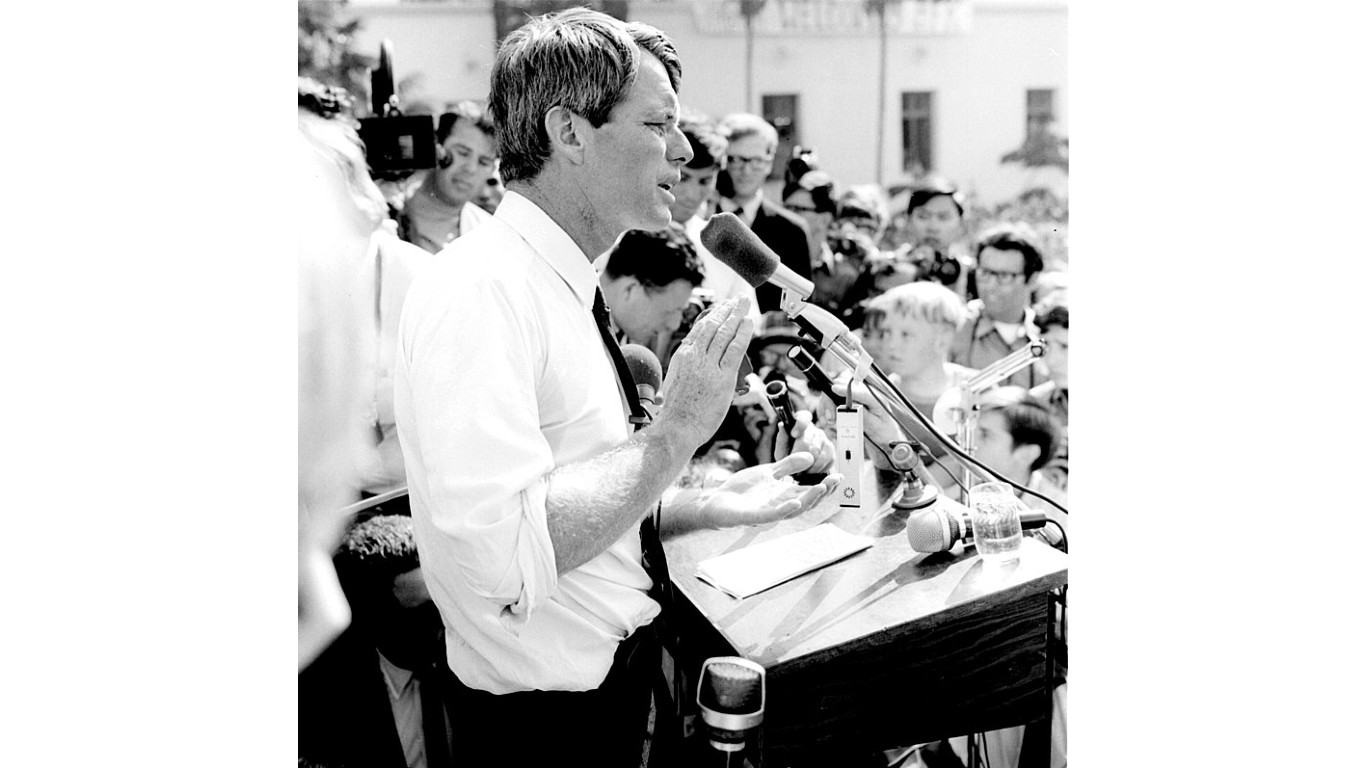
Robert Kennedy
> Killed in: 1968
> Perpetrator(s): Sirhan Sirhan
After Lyndon B. Johnson decided not to run for re-election as the Democratic candidate for president in 1968, the race was wide open. Robert Kennedy, who had served his brother JFK and then Johnson as attorney general, jumped into the fray. He was seen as a potentially reconciling figure for a divided country, because much of his campaign had focused on civil rights. Kennedy tried to strike a nonviolent cord with a mostly minority crowd when he announced the death of Dr. Martin Luther King Jr. while on the campaign trail in April 1968. Two months later, on the night he’d won the California primary, Kennedy was slain by Jordanian refugee Sirhan Sirhan as he exited through the kitchen of the Ambassador Hotel in Los Angeles after a victory celebration. Some political observers believed that even if he’d lived, he wouldn’t have won the Democratic nomination, but he was young enough to have run again in 1972 and afterward.
Harvey Milk
> Killed in: 1978
> Perpetrator(s): Dan White
Harvey Milk was the first openly gay person to sit on the San Francisco board of supervisors. Following his election in 1977, Milk focused on issues such as fair housing and ending workplace discrimination. Dan White, a former political ally who’d left his city supervisor’s job because of mental health issues, asked Milk for help in regaining his job. After Milk refused, White shot Milk and Mayor George Moscone at City Hall. After White was convicted on the lesser charge of voluntary manslaughter, the verdict touched off rioting in some parts of San Francisco. Milk’s death brought national attention to issues in the LGBTQ community.
[in-text-ad-2]
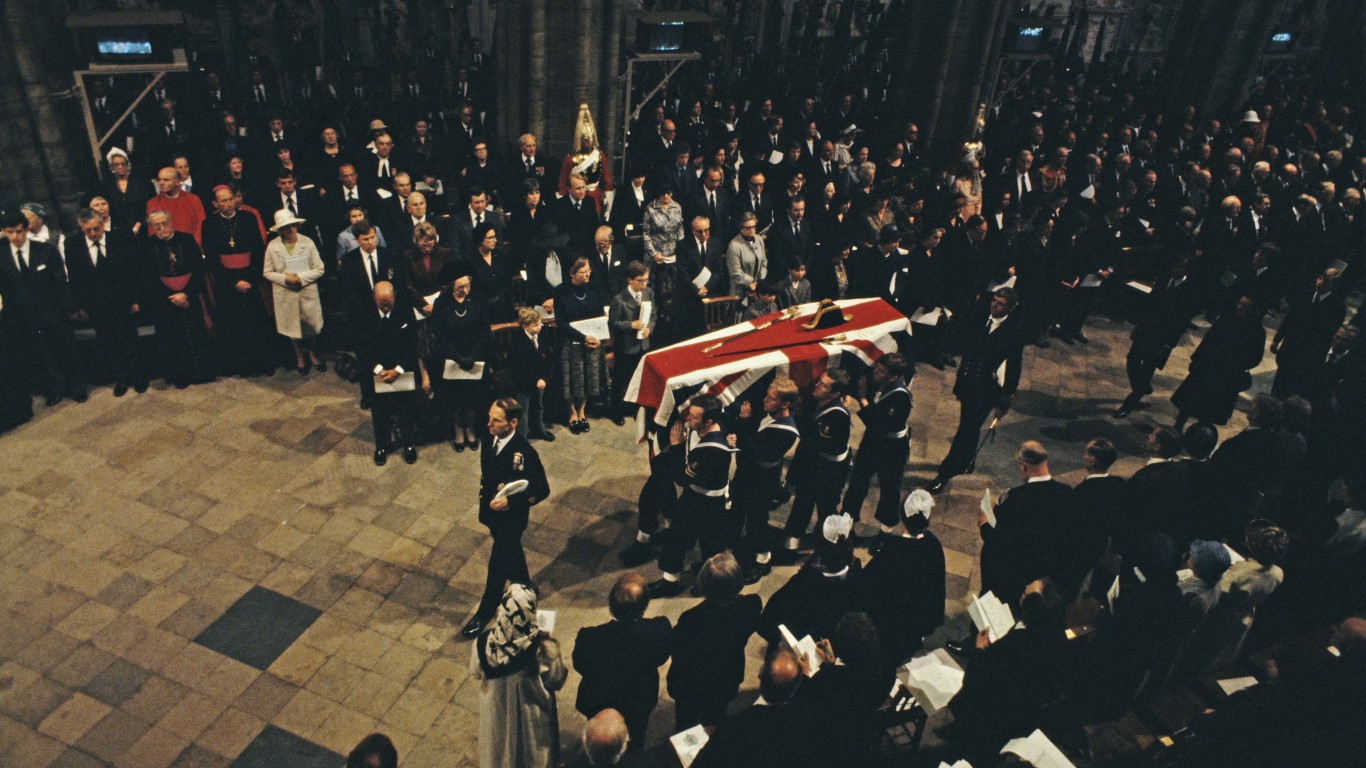
Lord Mountbatten
> Killed in: 1979
> Perpetrator(s): Irish Republican Army
Lord Mountbatten, a British military strategist during World War II and the last viceroy of British India, was the great-grandson of Queen Victoria, the second cousin of Queen Elizabeth II, and a confidante of Prince Charles – whom he called his “honorary grandson.” He was widely seen as a prominent symbol of both the royal family and the British Empire. While he was fishing on a boat in Donegal Bay off Ireland’s northwest coast, the Irish Republican Army detonated 50 pounds of gelignite hidden in his vessel, killing him and three others. It was a signal from the IRA that no one in the British elite was safe. That attack, along with another the same day that killed 18 British soldiers, prompted the government of newly elected Prime Minister Margaret Thatcher to crack down on the IRA, beginning a long period of worse-than-usual relations between Ireland and Britain and costing the IRA support from many former sympathizers.
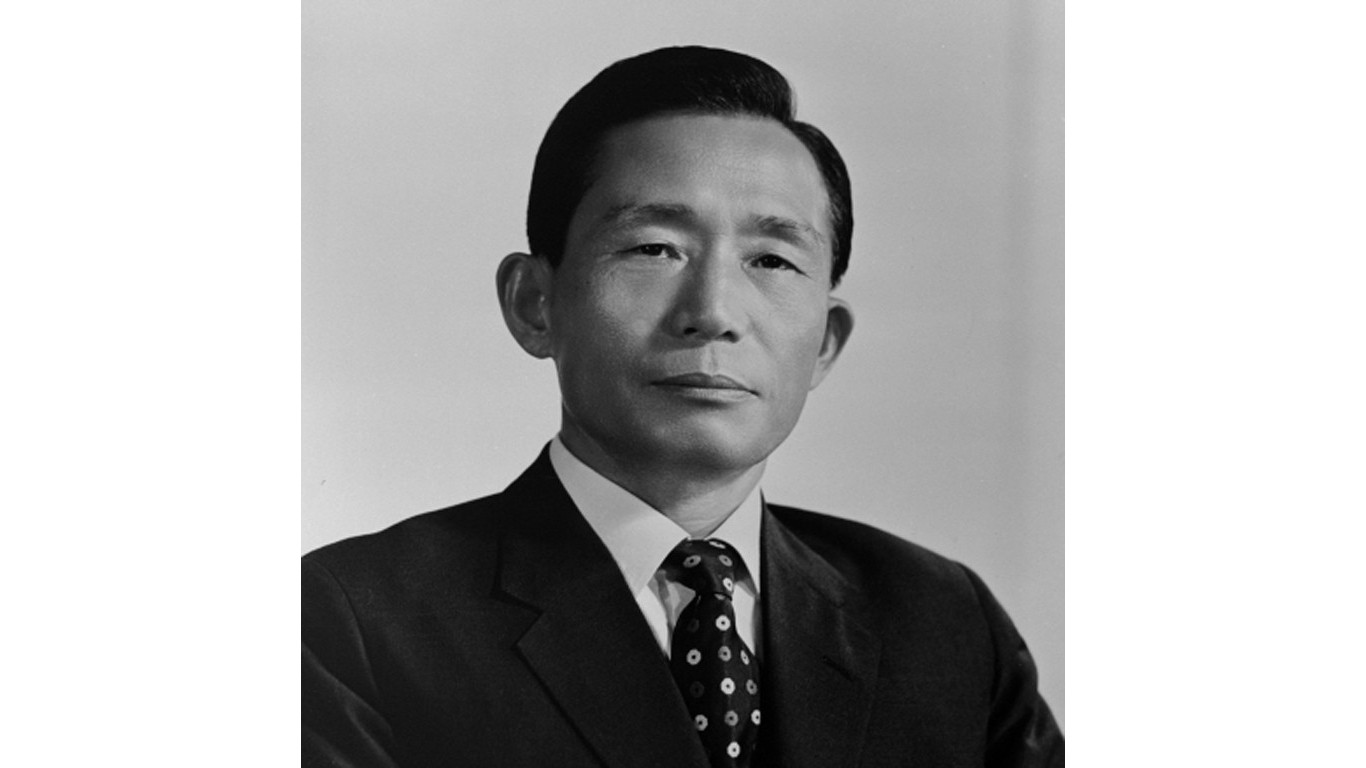
Park Chung-hee
> Killed in: 1979
> Perpetrator(s): Kim Jae Kyu
Under President Park Chung-hee, who took over the government of South Korea in a military coup in 1961, the country experienced spectacular economic growth through the 1970s. But the former general’s heavy-handed rule alienated many segments of South Korean society. Demonstrations, sometimes turning violent, erupted in the nation’s capital of Seoul. South Korea yearned for a return to real democracy. There are many theories as to his motive, but while Park was attending a banquet in Seoul, Kim Jae-kyu, chief of the Korean Central Intelligence Agency and a former friend of the president, shot him to death. Park’s death paved the way for the eventual democratization of the country beginning in the late 1980s.
[in-text-ad]

Anwar Sadat
> Killed in: 1981
> Perpetrator(s): Khalid Ahmed Showky Al-Islambouli
As president of Egypt, Anwar Sadat helped his country gain a measure of national redemption following its humiliating defeat at the hands of Israel during the Six-Day War in 1967 by attacking the Jewish state in the Yom Kippur War of 1973. Sadat subsequently turned peacemaker, however, by becoming the first Arab leader to forge a peace accord with Israel – thus winning himself and Israeli prime minister Menachem Begin the Nobel Peace Prize in 1978. This achievement would cost Sadat his life. He was assassinated at a military parade by Islamic extremists in 1981, setting in motion the events that led to war in Lebanon in 1982 and, through the influence of Egyptian doctor Ayman al-Zawahiri, believed to have been involved in the assassination plot, eventually to the creation of al-Qaida.

Indira Gandhi
> Killed in: 1984
> Perpetrator(s): Sikh extremists
Indira Gandhi, the daughter of Jawaharlal Nehru, independent India’s first prime minister – but no relation of Mahatma Gandhi – led the world’s largest democracy for 15 years. When Sikh separatists took over the Golden Temple in Punjab, the holiest Sikh shrine, she sent in the military to expel them from the site. Sikhs were outraged by the violence of her reaction, and two of her Sikh bodyguards shot her while she walked in the garden of her official residence. Her death ignited violence all over India and thousands of Sikhs were killed. Police and government officials did almost nothing to stop the fighting. Violence against India’s ruling class would continue. Her death also allowed her son, Rajiv Gandhi, to assume her office, and his policies of liberalization and globalization had lasting effects on the India economy.
Rajiv Gandhi
> Killed in: 1991
> Perpetrator(s): Suicide bomber
Rajiv Gandhi, the son of Indira Gandhi, succeeded his mother as prime minister following her assassination, serving until 1989. While he was in office, he sent the Indian Peace Keeping Force to Sri Lanka to help the government combat Tamil rebels. After he stepped down, he was campaigning for another politician in the Tamil-majority Indian state of Tamil Nadu when a female suicide bomber, a member of the Liberation Tigers of Tamil Eelam, triggered explosive concealed beneath her dress, killing him and 14 others. Gandhi’s death created a political vacuum in India and led to the rise of numerous regional political parties as people came to distrust national politics. Laws passed after the assassination also gave the government greatly increased anti-terrorism powers.
[in-text-ad-2]
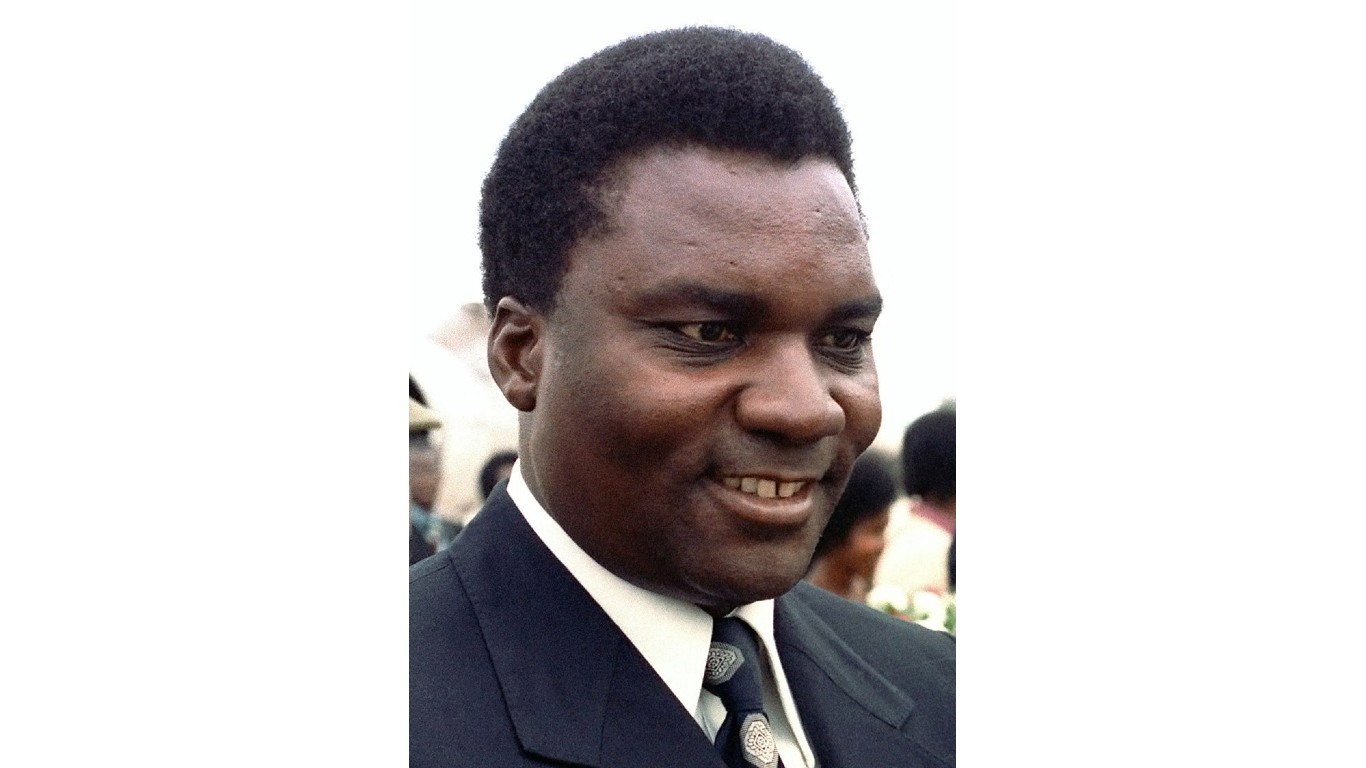
Juvénal Habyarimana
> Killed in: 1994
> Perpetrator(s): Possibly opposition party
The death of Rwandan president Juvénal Habyarimana, possibly at the hands of the opposition party, led to one of the worst tragedies of the 20th century. Habyarimana was the second president of the Republic of Rwanda, formerly a German and then a Belgian colony, serving from 1973 to 1994. The nation had long been torn by strife between its two major ethnic groups, the Hutu and the Tutsi. A plane carrying Habyarimana, along with the president of neighboring Burundi was shot down by surface-to-air missiles over the presidential palace. Both presidents were Hutu, and suspicion immediately fell on members of the Tutsi Rwandan Patriotic Front, with whom Habyarimana had been negotiating. Some, though, suspected Hutus opposed to any agreement with the RPF. Whoever was responsible for the assassination, it ignited the horrific Rwandan Genocide, which claimed the lives of between 800,000 and a million Tutsi and moderate Hutu.

Yitzhak Rabin
> Killed in: 1995
> Perpetrator(s): Yigal Amir
Prime Minister Yitzhak Rabin of Israel was involved in ongoing peace talks with Palestinian representatives, which led to the Oslo Accords, aimed at resolving Israeli-Palestinian issues and spurring Israeli withdrawal from areas of the West Bank and the Gaza Strip. Rabin and Palestine Liberation Organization leader Yasir Arafat were awarded the 1994 Nobel Peace Prize for their efforts. An ultranationalist Israeli named Yigal Amir thought that Rabin was betraying Israel and his fellow Jews, and after a peace rally in Tel Aviv, approached Rabin’s car and shot him. His death was a major setback to the Middle East peace process and ushered in a period of political instability in Israel.
[in-text-ad]

Alexander Litvinenko
> Killed in: 2006
> Perpetrator(s): Andrei Lugovoi
Former Russian spy Alexander Litvineko, who had defected to Great Britain, was killed by polonium, a radioactive poison, put in his tea. An official British investigation into the incident determined that former KGB bodyguard Andrei Lugovoi and his accomplice, Dmitry Kovtun, were responsible. They almost certainly killed Litvinenko with approval from Russian leader Vladimir Putin. The episode emboldened Putin to push his agenda forward, regardless of the outcry from abroad, with results being felt in Ukraine to this day.
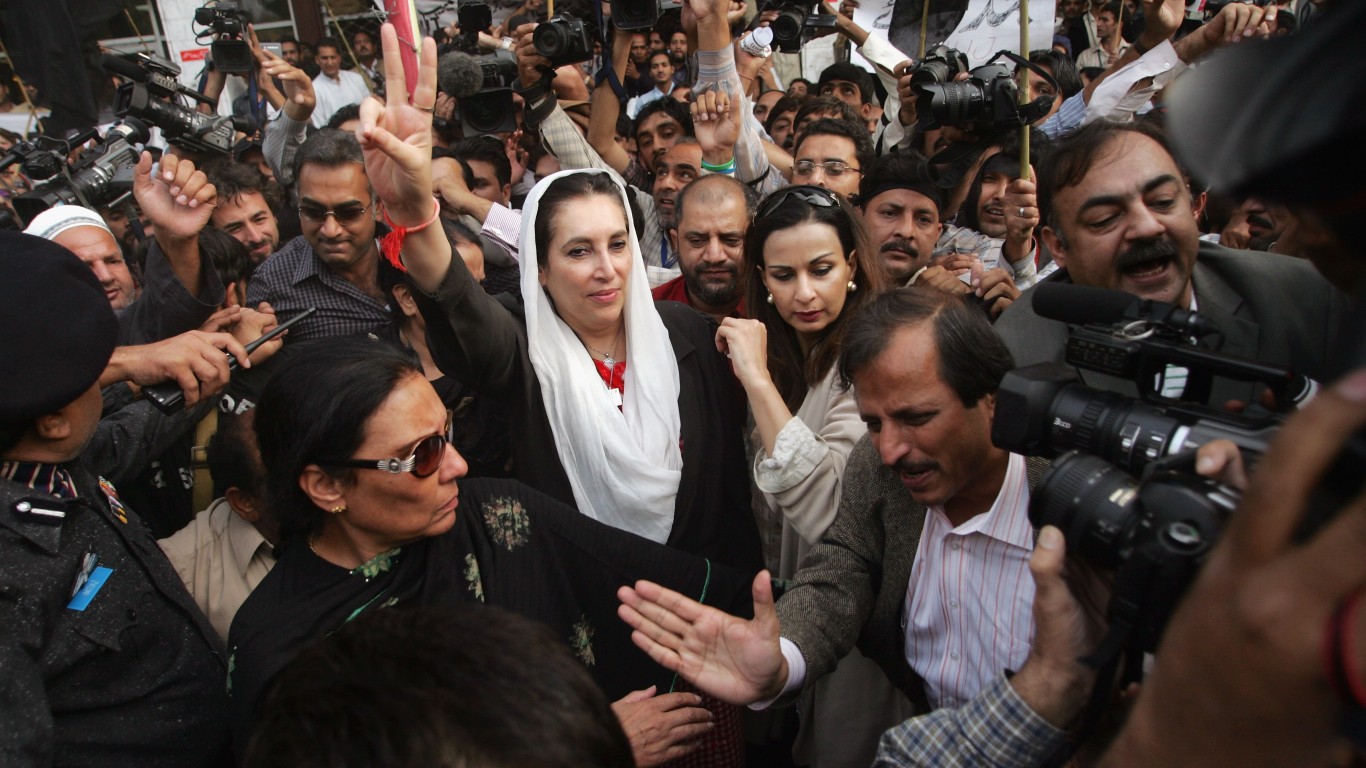
Benazir Bhutto
> Killed in: 2007
> Perpetrator(s): Suicide bomber
Benazir Bhutto, daughter of a former Pakistani prime minister, was the first female prime minister of Pakistan and the first woman to lead a democratic government in a Muslim-majority country. She served two terms in office, from 1988 to 1990 and again from 1993 to 1996. After leaving office the second time, she remained in the country as opposition leader, then left for self-imposed exile in Dubai for eight years – remaining active in Pakistani politics from afar. She returned to Pakistan in 2007 with thoughts of running again for prime minister. On Dec. 27, however, when she opened the hatch on a bulletproof vehicle to wave to a crowd in Rawalpindi, an assassin shot her and detonated a suicide vest, killing Bhutto and 22 others. Who ordereded the hit is unknown. Even though the manner of her death was shocking, political observers were not surprised she was killed. Bhutto was a controversial figure and her earlier governments were tainted by corruption – and Islamic fundamentalists also opposed her stature as a prominent female politician. Her death touched off rioting in cities and trains were set on fire and a period of political instability – and because she was pro-Western, her death led to a deterioration of Pakistan’s relations with the U.S. and other countries.
Osama Bin Laden
> Killed in: 2011
> Perpetrator(s): US special forces
Al-Qaida leader Osama bin Laden, mastermind of the Sept. 11 terrorist attacks in the United States and the symbol of the war on terrorism, was found by U.S. special forces in a hiding place in Pakistan, and they shot him to death. His killing not only weakened a top terror organization, it provided a trove of information that helped the U.S. prevent future attacks and boosted American morale. However, it also led to the rise of ISIS to fill the power vacuum left by a weakened al-Qaida. (Former President Bill Clinton said that he had had an opportunity to kill bin Laden before the Sept. 11 attacks but chose not to do so because it would have meant destroying a town and killing 300 people. Had he done so, American history would have been different.)
Take Charge of Your Retirement In Just A Few Minutes (Sponsor)
Retirement planning doesn’t have to feel overwhelming. The key is finding expert guidance—and SmartAsset’s simple quiz makes it easier than ever for you to connect with a vetted financial advisor.
Here’s how it works:
- Answer a Few Simple Questions. Tell us a bit about your goals and preferences—it only takes a few minutes!
- Get Matched with Vetted Advisors Our smart tool matches you with up to three pre-screened, vetted advisors who serve your area and are held to a fiduciary standard to act in your best interests. Click here to begin
- Choose Your Fit Review their profiles, schedule an introductory call (or meet in person), and select the advisor who feel is right for you.
Why wait? Start building the retirement you’ve always dreamed of. Click here to get started today!
Thank you for reading! Have some feedback for us?
Contact the 24/7 Wall St. editorial team.
 24/7 Wall St.
24/7 Wall St.